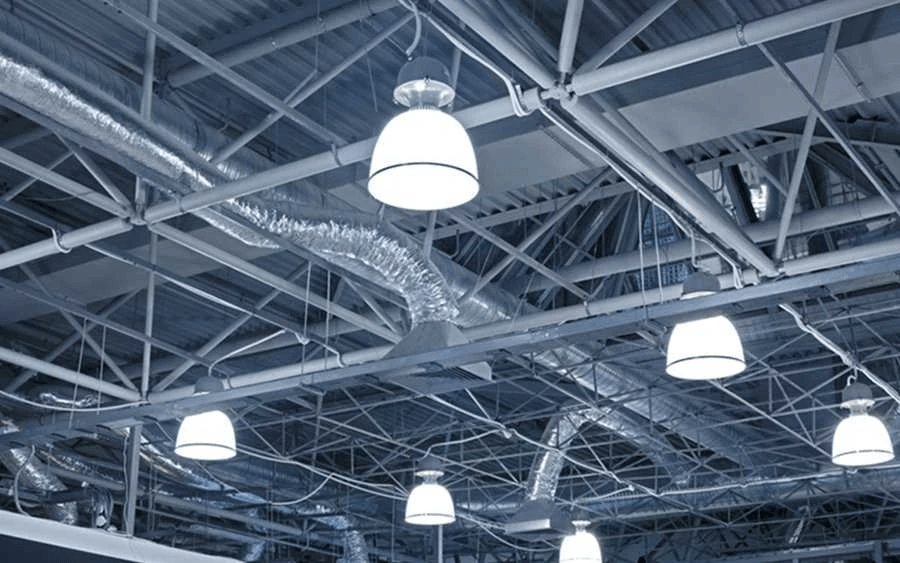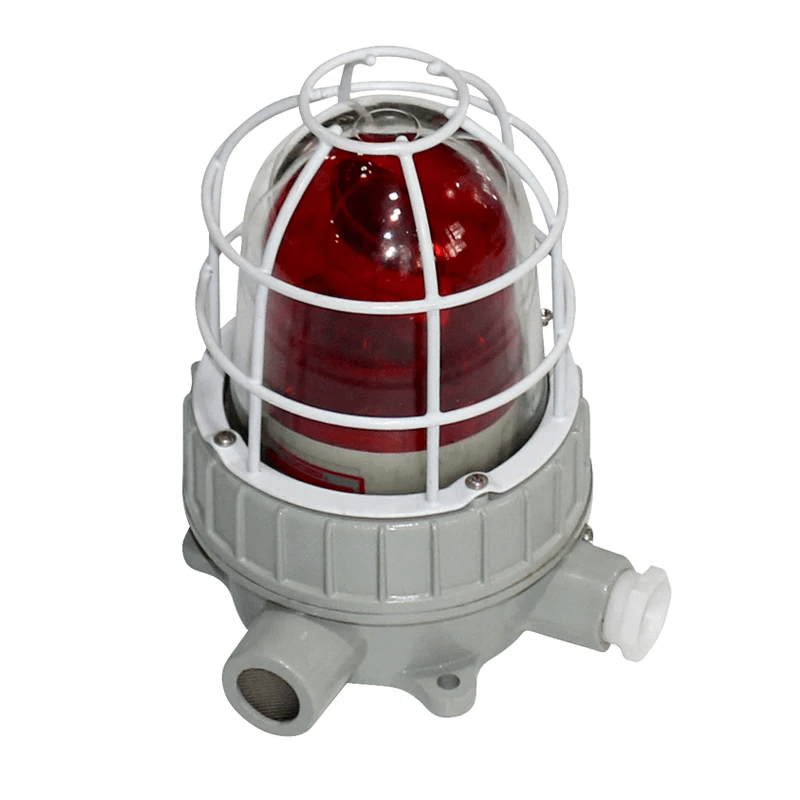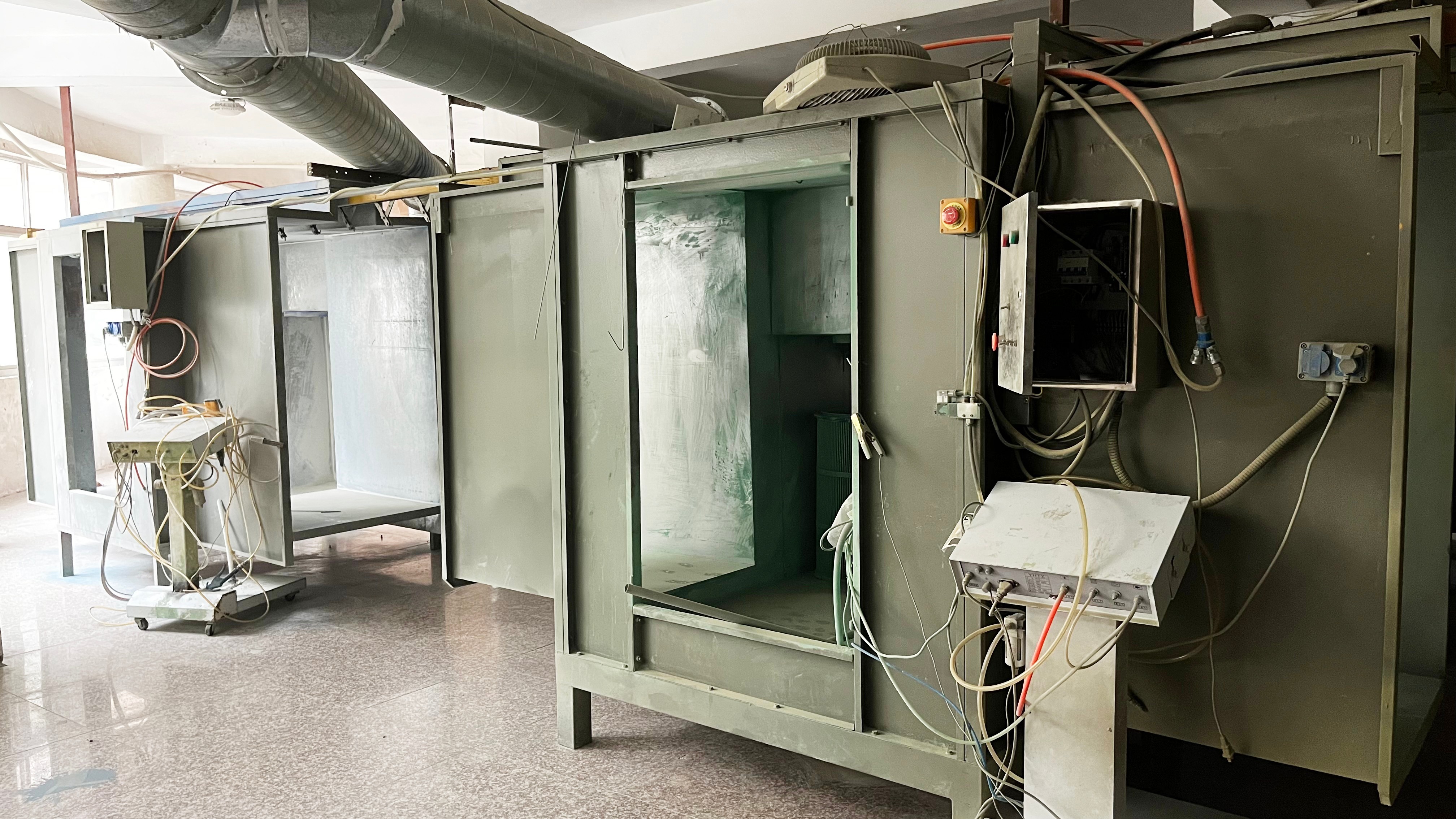Introduction

When it comes to creating safe and comfortable environments, understanding harsh and hazardous lighting is crucial. Harsh and hazardous area lighting can have detrimental effects on health, productivity, and safety if not properly addressed. In this guide, we will explore what is considered harsh lighting, what is hazardous lighting, the difference between harsh and soft lighting, which type of lighting could be hazardous, and how to choose the right solutions to mitigate these risks.
Understanding Harsh and Hazardous Lighting
Harsh and hazardous area lighting refers to the presence of intense or dangerous lighting conditions that can negatively impact individuals in various settings. Whether it's in industrial facilities, office spaces, or outdoor environments, these types of lighting can pose serious risks if not properly managed.
Identifying the Risks
The risks associated with harsh and hazardous lighting include eye strain, headaches, decreased productivity, accidents due to poor visibility, compliance issues with safety standards, and potential long-term health implications. It's important to recognize these risks in order to address them effectively.
Choosing the Right Solutions
To mitigate the risks associated with harsh and hazardous area lighting, it's essential to choose the right solutions that prioritize safety, comfort, and energy efficiency. By understanding the different types of lighting that could be hazardous and implementing proper measures, it's possible to create environments that promote well-being while minimizing potential dangers.
What is Considered Harsh Lighting?

Harsh and hazardous lighting can have detrimental effects on health and well-being, especially when it comes to eye strain, headaches, and fatigue. Prolonged exposure to harsh lighting can lead to increased stress levels and decreased overall comfort in a given space.
Effects on Health and Well-being
The glare and intensity of harsh lighting can cause discomfort, leading to eye strain, headaches, and even migraines for individuals exposed to it for extended periods. In addition, it can disrupt the body's natural circadian rhythm, leading to sleep disturbances and overall fatigue.
The negative impact of harsh lighting on health and well-being can also extend to mental health. Studies have shown that exposure to bright, artificial lighting can contribute to increased stress and anxiety levels in individuals. This can have a significant effect on overall well-being and may lead to decreased productivity and performance in the workplace. Therefore, it is crucial for employers to consider the psychological effects of lighting when creating a comfortable and conducive work environment for their employees.
Impact on Productivity
Harsh lighting has been shown to negatively impact productivity in the workplace by causing distractions and reducing employee morale. It can create an uncomfortable environment that hinders focus and concentration, ultimately leading to decreased efficiency.
In order to address the negative impact of harsh lighting on productivity, companies can consider implementing adjustable lighting systems that allow employees to control the brightness and color temperature of their workspace. This can help create a more comfortable and personalized environment, reducing distractions and promoting better focus. Additionally, providing access to natural light and incorporating biophilic design elements can also contribute to a more pleasant work atmosphere, boosting employee morale and overall productivity.
Mitigating Strategies
To mitigate the negative effects of harsh lighting on health and productivity, it's important to consider softer illumination options such as diffused or indirect lighting. Additionally, implementing adjustable light controls allows individuals to customize their lighting environment based on their specific needs. Another effective strategy is to incorporate natural light sources whenever possible, as this has been shown to have positive effects on mood and energy levels. Furthermore, using task-specific lighting for different activities can help reduce strain on the eyes and improve overall comfort in the workspace.
What is Hazardous Lighting?

Hazardous lighting refers to the use of lighting in environments where there is a risk of explosion, fire, or other dangerous conditions. This can include areas with flammable gases, vapors, or combustible dust. It's crucial to be aware of potential dangers associated with such lighting and take necessary precautions to ensure safety.
Recognizing Potential Dangers
In hazardous environments, the presence of certain substances can create a high risk for ignition or explosion if not properly managed. This can pose a serious threat to the safety of workers and the surrounding area. It's important to recognize these potential dangers and implement appropriate lighting solutions that comply with safety standards to mitigate the risks. Additionally, regular maintenance and inspection of lighting equipment should be conducted to ensure that any potential issues are identified and addressed promptly.
Compliance with Safety Standards
Compliance with safety standards is essential when it comes to hazardous lighting. Regulations such as those set by OSHA (Occupational Safety and Health Administration) provide guidelines for the use of lighting in hazardous locations to prevent accidents and injuries. Adhering to these standards helps ensure that the lighting used in these environments is safe and suitable for the specific conditions present.
Adhering to safety standards also helps to minimize the risk of fires and explosions in hazardous lighting environments. By following OSHA regulations, companies can ensure that the lighting fixtures and equipment used are designed to withstand potentially combustible or explosive atmospheres. This proactive approach not only protects the safety of workers but also safeguards the integrity of the facilities in these hazardous locations.
Avoiding Accidents and Injuries
By choosing appropriate hazardous area lighting that meets safety requirements, it's possible to minimize the risk of accidents and injuries in potentially dangerous environments. Properly designed and installed lighting can help prevent ignition sources from causing harm, ultimately creating a safer work environment for everyone involved.
In addition, choosing lighting with features such as explosion-proof and corrosion-resistant materials can further reduce the risk of accidents in hazardous areas. These specialized lighting options are designed to withstand harsh conditions and prevent malfunctions that could lead to dangerous situations. By investing in high-quality hazardous area lighting, businesses can demonstrate their commitment to safety and protect their employees from potential harm.
The Difference Between Harsh and Soft Lighting

When it comes to lighting, the visual impact is a key factor to consider. Harsh lighting often creates stark contrasts and sharp shadows, leading to eye strain and discomfort. On the other hand, soft lighting provides a more gentle and diffused illumination, creating a welcoming and soothing atmosphere.
Understanding the Visual Impact
Harsh lighting can be glaring and intense, causing headaches and fatigue for those exposed to it for extended periods. Soft lighting, on the other hand, offers a more subtle and pleasant glow that reduces strain on the eyes and promotes relaxation. Understanding how different types of lighting affect visual perception is crucial in creating comfortable environments.
Creating Comfortable Environments
Soft lighting has the ability to transform any space into a cozy and inviting area, making it ideal for homes, restaurants, or hotel lobbies. In contrast, harsh lighting is often used in industrial settings where maximum visibility is required but can lead to discomfort for workers. By choosing soft lighting solutions for residential or commercial spaces, you can create an ambiance that promotes relaxation and well-being.
Maximizing Energy Efficiency
In addition to its visual impact, soft lighting also offers energy efficiency benefits compared to harsh lighting options. By using softer illumination sources such as LED bulbs or dimmable fixtures, you can reduce energy consumption while still maintaining adequate brightness levels. This not only helps create comfortable environments but also contributes to cost savings and environmental sustainability.
Which Type of Lighting Could Be Hazardous?

Evaluating Different Environments
When evaluating different environments for potential hazards, it's important to consider areas with high heat, moisture, dust, or chemicals. These conditions can impact the performance and safety of lighting fixtures, making them potentially hazardous. Industrial settings, outdoor spaces, and areas with heavy machinery are prime examples of environments where lighting could pose a risk.
Assessing Potential Hazards
Assessing potential hazards involves identifying specific risks associated with the type of lighting used in a particular environment. Factors such as flickering lights, glare, inadequate illumination, or exposure to UV radiation can all contribute to hazardous lighting conditions. Proper assessment is crucial for preventing accidents and ensuring the safety of individuals working in these environments.
Implementing Safety Measures
Implementing safety measures involves selecting appropriate lighting solutions that are designed to withstand harsh conditions and comply with safety standards. This may include using explosion-proof fixtures in volatile environments or installing shatter-resistant covers in areas prone to impact damage. Regular maintenance and inspections also play a key role in ensuring that hazardous lighting risks are minimized.
The Complete Buyer's Guide to Harsh and Hazardous Lighting

Factors to Consider When Purchasing
When purchasing lighting for harsh and hazardous areas, it's crucial to consider factors such as durability, resistance to environmental elements, and compliance with safety standards. Look for products specifically designed for these challenging environments to ensure longevity and safety.
Finding the Right Supplier
Finding a reliable supplier for harsh and hazardous area lighting is essential. Look for a company with a proven track record of providing high-quality, industry-compliant products. Consider suppliers who offer comprehensive support, including expert advice on product selection and installation.
Ensuring Proper Installation and Maintenance
Proper installation of harsh and hazardous area lighting is critical for ensuring optimal performance and safety. Choose an experienced professional or team to handle the installation process according to manufacturer guidelines. Additionally, establish a regular maintenance schedule to address any issues promptly.
By following this buyer's guide, you can make informed decisions when purchasing harsh and hazardous area lighting solutions that meet your specific needs while prioritizing safety and compliance.
Conclusion
In conclusion, understanding the risks and impact of harsh and hazardous lighting is crucial for creating safe and comfortable environments. By making informed lighting choices, businesses can ensure occupational safety, promote health and well-being, and maximize productivity. It's essential to prioritize proper lighting solutions to mitigate potential dangers and create visually appealing spaces.
Ensuring Occupational Safety
Occupational safety should be a top priority when it comes to harsh and hazardous area lighting. By recognizing potential hazards and complying with safety standards, businesses can avoid accidents and injuries in the workplace. Proper installation and maintenance of lighting solutions are essential for ensuring the well-being of employees and visitors.
Making Informed Lighting Choices
Making informed lighting choices involves evaluating different environments to identify potential risks associated with harsh lighting. Finding the right supplier who offers quality products is crucial for maximizing energy efficiency while creating comfortable spaces. Factors such as brightness, color temperature, and glare should be carefully considered when purchasing lighting solutions.
Promoting Health and Well-being with Proper Lighting Solutions
Proper lighting solutions not only enhance visual comfort but also have a significant impact on health and well-being. By understanding the difference between harsh and soft lighting, businesses can create environments that promote productivity while minimizing negative health effects. Implementing safety measures in areas where hazardous lighting could be present is essential for maintaining a healthy work environment.

